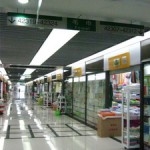As technology improves and demand accelerates in areas like health care, transportation, aerospace and agriculture, China is growing rapidly in both production and consumption, especially in nonwovens.
During the past several decades, China’s industrial textile business has experienced a period of continuous expansion. Both scale and applications have expanded, while technology has also improved. There has been extensive involvement in a wide variety of end products, including medical treatment and public health applications, as well as construction, transportation, aerospace, agriculture and new energy initiatives. The country’s industrial textiles industry has become involved in energy-saving, high-temperature gas-filtration, waste-recycling, and high-performance fibers, such as carbon fiber Kevlar® and ultra-high molecular-weight polyethylene fiber.
As part of emerging strategic industries, the core level of the development of nonwovens in China has become an important benchmark for measuring the competitiveness of the national textile industry. With the acceleration of urbanization, industrial textiles will continue to permeate all aspects of people’s lives all around the world. Nonwoven products make up more than 35 percent of industrial textile processing (nonwoven, weaving, knitting, braiding), and more than 90 percent of the nonwoven fabric is used for industrial textiles. The versatile and innovative nature of these nonwoven fabrics make them an increasingly important raw material for textile business.
Industry growth continues
The Chinese government’s five-year economic development initiatives have played a leading role in this period of rapid growth for industrial textiles. The total volume of fiber has grown, while the industry has expanded in scale. The volume of total processed fiber for textile business in 2010 reached about 8.2 million tons, accounting for about 20 percent of the total industry, and nonwoven fabric output reached about 2.8 million tons.
Enterprises in industrial textiles have developed with improving supply chains. Industrial agglomeration has become more evident, and the production capacity of six Chinese provinces (including Zhejiang and Guangdong) accounted for about 80 percent of the nation’s total production capacity in 2010. A number of industrial clusters in med-tech, filter and separation textiles, geo-tech, and build-tech have formed to become a foundation for future development. Business enterprises relying on technology centers, laboratories and other research and development platforms have made contributions in technological innovation, product development and personnel training.
With the pace of industrial upgrading, some traditional large textile manufacturers have become involved in industrial textiles step-by-step, encouraging new vitality for textile business on the basis of their advantages of human resources, finance technology and management. In the area of spunlaced nonwovens, there are 93 enterprises manufacturing 160 lines, of which 30 are imported. In total, production capacity has reached 0.3 million tons. For spunbond and meltblown nonwovens, there are more than 800 lines, including 40 spun-melt-spun lines with a capacity of 1.3 million tons.
———————————————————————————
Yiwu Textile Wholesale Trade Contact Yiwu International Trade Co.,Ltd.:
We are professional Yiwu Agents.Low commission with top services.
Send us inquiry now and you will get reply in 24 hours.
Do commodity trading come to China Wholesale Market.
Back to Yiwu International.

Yiwu Recent Comments